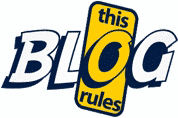In case you didn’t know technology has come such a long way that now Google’s dream robot can create art. If you haven’t noticed the hype around the psychedelic pictures that have been all over the internet, in this article we’ll break down the process that is behind the software that powers Deep Dream, the weird photos and we’ll try to answer the question on everyone’s lips: do computers have imagination? You can wait a little longer before hitting that imaginary panic button in your mind. The Deep Dream robot is far away from taking over the world, and just because it can deliver a few picture invariably embellished with puppy images, it does not mean we’ll all soon be its slaves.

In order to understand the concept behind Google’s Deep Dream robot, let’s take a closer look at what it does step by step, how it can “create art” and how it learns to distinguish images one from another. You’re probably familiar with Google’s image recognition feature. We’re talking about that one that allows you to google a picture of your washing machine in an attempt to find its instructions manual online.
Still with me? Moving on… The image recognition software uses hundreds of reference pictures for comparing it to the picture to be recognized. How does it do that? After looking at dozens of pictures of a watermelon, the software starts to understand that a watermelon is usually round, green with stripes, that it has a red interior dotted with black seeds.

Let’s say you upload an image of a cake, the software will go ahead and try to find a reference picture by identifying the similarities. But let’s say you tell the software to look for a dog in a picture that doesn’t have a dog. It will identify whatever looks remotely as a dog and let you know it’s found it. Can you see where this is going now? The program will transform all the features that look a little bit like a dog into even more prominent feature, adding puppy faces here and there.
By feeding an image through a layer of artificial neurons, images can become more and more distorted until they don’t look like their source at all anymore. The software just enhances particular features, for examples edges, adding noise and morphing everything together.

Experimenting with Deep Dream was certainly fun for the Google team but it’s infinitely more fun for the internet to play with it. After Google realized the software can be used to generate images of the things it had previously recognized, a spark became a blazing fire. Deep Dream is still a few painting lessons away from delivering visually appealing content, but it’s still weirdly insane to have a peek inside a software’s dreams.
What really raised waves on the internet was Google releasing the code for the system online. So you’re just steps away from uploading a selfie and watching it transform into an image that will look like a Dali painting. Curious to see how others are having fun with Google’s Dream software? Check out #DeepDream on any social media and prepare to be blown away. Also, prepare to see a lot of puppies mashed in landscape pictures.

While we’re having fun uploading baby pictures and metamorphosing them into crawling things, we’re missing the bigger picture at hand here. This artificial intelligence program is a glimpse into our future. This could possibly further develop and turn into a powering tool that can help us evolve and explore new horizons.

Leave a Reply